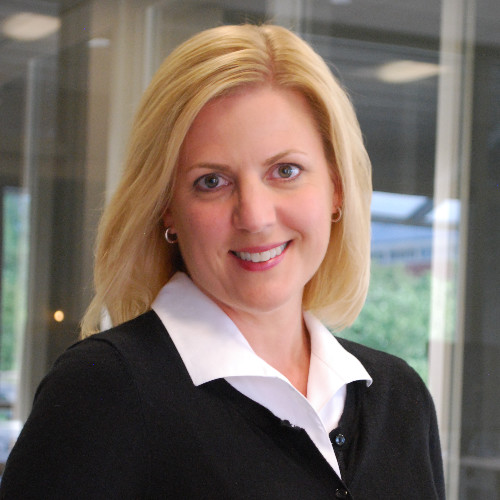transitions of care
See the following -
careMESH Receives 2015 Edition ONC Health IT Certification
 careMESH, the only service provider to guarantee digital delivery of patient health information to any U.S.-based clinician, announced that it has achieved ONC-Health IT 2015 Edition Health IT Module Certification for reporting on the delivery of transitions of care. This ONC-Health IT Certification gives customers the assurance that careMESH can be used for digital communications and its reports can be used in Promoting Interoperability attestation. "Achieving 2015 ONC certification was important so that our customers could not only rely on careMESH for digital communications with the outside world, but also on our reports for attestation," said careMESH President and COO, Justin Sims.
careMESH, the only service provider to guarantee digital delivery of patient health information to any U.S.-based clinician, announced that it has achieved ONC-Health IT 2015 Edition Health IT Module Certification for reporting on the delivery of transitions of care. This ONC-Health IT Certification gives customers the assurance that careMESH can be used for digital communications and its reports can be used in Promoting Interoperability attestation. "Achieving 2015 ONC certification was important so that our customers could not only rely on careMESH for digital communications with the outside world, but also on our reports for attestation," said careMESH President and COO, Justin Sims.
- Login to post comments
Case Study: Achieving Meaningful Use Targets With careMESH Digital Referrals and Transitions of Care
 The Medical Home Development Group (MHDG) is a Washington D.C.-based physician group which qualifies for the Medicaid EHR Incentive Program. On the heels of successfully meeting their Meaningful Use (MU-1) objective with the implementation of an Electronic Health Record (EHR), MHDG focused 2018 on seeking innovative ways to meet MU-2 measures through new digital referral and care transition processes...Quickly nearing the end of the performance period, MHDG chose the careMESH secure, cloud-based communications platform and embedded workflow tools to meet the measure in time. By retrieving patient records from their Sevocity EHR and using the careMESH multi-channel delivery approach to ensure truly digital sharing with all of the receiving providers, MHDG had an opportunity to complete its reporting requirements before year-end.
The Medical Home Development Group (MHDG) is a Washington D.C.-based physician group which qualifies for the Medicaid EHR Incentive Program. On the heels of successfully meeting their Meaningful Use (MU-1) objective with the implementation of an Electronic Health Record (EHR), MHDG focused 2018 on seeking innovative ways to meet MU-2 measures through new digital referral and care transition processes...Quickly nearing the end of the performance period, MHDG chose the careMESH secure, cloud-based communications platform and embedded workflow tools to meet the measure in time. By retrieving patient records from their Sevocity EHR and using the careMESH multi-channel delivery approach to ensure truly digital sharing with all of the receiving providers, MHDG had an opportunity to complete its reporting requirements before year-end.
- Login to post comments
EMR Direct Announces Availability Of Direct Project Secure Email Powered By phiMail™ In OpenEMR 4.1.2
 EMR Direct, a leading developer of software for the secure exchange of Protected Health Information (PHI) over the Internet, today announced the integration of its phiMail Direct messaging platform with the latest production release of OpenEMR, enabling users of the open source electronic health record software to send and receive Direct messages through their EHR system. OpenEMR 4.1.2, released on August 17, is focused on enhanced interoperability, and the Direct messaging capabilities powered by phiMail are key to seamlessly exchanging clinical information with other healthcare providers for referrals and other transitions of care. The functionality can be activated through hosted service or customer deployment of the phiMail Direct messaging software developed by EMR Direct. Read More »
EMR Direct, a leading developer of software for the secure exchange of Protected Health Information (PHI) over the Internet, today announced the integration of its phiMail Direct messaging platform with the latest production release of OpenEMR, enabling users of the open source electronic health record software to send and receive Direct messages through their EHR system. OpenEMR 4.1.2, released on August 17, is focused on enhanced interoperability, and the Direct messaging capabilities powered by phiMail are key to seamlessly exchanging clinical information with other healthcare providers for referrals and other transitions of care. The functionality can be activated through hosted service or customer deployment of the phiMail Direct messaging software developed by EMR Direct. Read More »
- Login to post comments
EMR Direct Now Integrated with OpenEMR
 is on a mission to modernize medical work flow and improve patient care by simplifying healthcare interoperability. The company is committed to developing technologies that protect patient privacy, improve the quality and coordination of care, increase productivity, and reduce costs. Recently, EMR Direct donated its code to OpenEMR which integrated their solution into OpenEMR version 4.1.2 They have also announced their participation in the Tennessee Health eShare program, facilitating access to Direct messaging for healthcare providers across that state. Read More »
is on a mission to modernize medical work flow and improve patient care by simplifying healthcare interoperability. The company is committed to developing technologies that protect patient privacy, improve the quality and coordination of care, increase productivity, and reduce costs. Recently, EMR Direct donated its code to OpenEMR which integrated their solution into OpenEMR version 4.1.2 They have also announced their participation in the Tennessee Health eShare program, facilitating access to Direct messaging for healthcare providers across that state. Read More »
- Login to post comments
Halamka Reports on the Progress on Interoperability Made by the HIT Standards Committee
 The March 2015 HIT Standards Committee was one of the most impactful meetings we have ever had. No, it was not the release of Meaningful Use Stage 3 or the certification rule. It was the creation of a framework that will guide all of our work for the next several years - everything we need for a re-charted standards harmonization convening body as well as a detailed interoperability roadmap, complementing the 10 year general plan developed by ONC. Thanks to Arien Malec for yeoman’s work in both areas...
The March 2015 HIT Standards Committee was one of the most impactful meetings we have ever had. No, it was not the release of Meaningful Use Stage 3 or the certification rule. It was the creation of a framework that will guide all of our work for the next several years - everything we need for a re-charted standards harmonization convening body as well as a detailed interoperability roadmap, complementing the 10 year general plan developed by ONC. Thanks to Arien Malec for yeoman’s work in both areas...
- Login to post comments
Is Machine Interoperability the Next Unusable Level of Meaningful Use?
 As the HIMSS15 extravaganza is getting under way, and every EHR vendor flush with cash from the Meaningful Use bonanza is preparing to take its unusable product to the next level, machine interoperability is shaping up to be the belle of the ball. A simple minded person may be tempted to wonder why people who, for decades, manufactured and sold EHRs that don’t talk to each other, are all of a sudden possessed by interoperability fever. The answer is deceptively simple. After exhausting the artificially created market for EHRs, these powerful captains of industry figured out that extracting rents for machine interoperability is the next big thing.
As the HIMSS15 extravaganza is getting under way, and every EHR vendor flush with cash from the Meaningful Use bonanza is preparing to take its unusable product to the next level, machine interoperability is shaping up to be the belle of the ball. A simple minded person may be tempted to wonder why people who, for decades, manufactured and sold EHRs that don’t talk to each other, are all of a sudden possessed by interoperability fever. The answer is deceptively simple. After exhausting the artificially created market for EHRs, these powerful captains of industry figured out that extracting rents for machine interoperability is the next big thing.
- Login to post comments
ONC's Efforts to Advance Worldwide Digital Health - The Global Digital Health Partnership White Papers
 As the world responds to the COVID-19 pandemic, we continue to see how digital health plays a vital role in care delivery. ONC recognizes the importance of advancing digital health at domestic and global levels. As discussed in a previous blog post, part of ONC's global engagement includes representing the United States in the Global Digital Health Partnership (GDHP). The GDHP currently runs five work streams: Interoperability, Clinical and Consumer Engagement, Cyber Security, Evidence and Evaluation, and Policy Environments.
As the world responds to the COVID-19 pandemic, we continue to see how digital health plays a vital role in care delivery. ONC recognizes the importance of advancing digital health at domestic and global levels. As discussed in a previous blog post, part of ONC's global engagement includes representing the United States in the Global Digital Health Partnership (GDHP). The GDHP currently runs five work streams: Interoperability, Clinical and Consumer Engagement, Cyber Security, Evidence and Evaluation, and Policy Environments.
- Login to post comments
The Meaningful Use Stage 2 Finish Line
Hospitals across the country have until September 30 to complete their 2014 reporting period for Meaningful Use Stage 2. Recently Ashish Jha and Julia Adler-Milstein published important articles in Health Affairs about the current state of EHRs and Health Information Exchange . What can we learn about the status of Meaningful Use Stage 2 across the country? Read More »
- Login to post comments
White Paper: Stop the Referral Problem - Building Digital Care Transitions that Reach Your Entire Network
 The healthcare industry has crossed a digital chasm-at least in part. Patient records have moved from paper to computer and many transactions, such as e-prescribing and lab orders have been automated, to accelerate workflows, minimize mistakes and reduce costs. But when it comes to sharing patient records, especially beyond the four walls of a hospital, we remain in the dark ages of paper and fax...In this paper, we will discuss our research about how referrals and care transitions are typically conducted; the financial, non-financial, and quality impacts on patient care; and near-term opportunities for leveraging technology to accelerate these processes to benefit provider organizations and to deliver a high-quality, efficient patient experience.
The healthcare industry has crossed a digital chasm-at least in part. Patient records have moved from paper to computer and many transactions, such as e-prescribing and lab orders have been automated, to accelerate workflows, minimize mistakes and reduce costs. But when it comes to sharing patient records, especially beyond the four walls of a hospital, we remain in the dark ages of paper and fax...In this paper, we will discuss our research about how referrals and care transitions are typically conducted; the financial, non-financial, and quality impacts on patient care; and near-term opportunities for leveraging technology to accelerate these processes to benefit provider organizations and to deliver a high-quality, efficient patient experience.
- Login to post comments